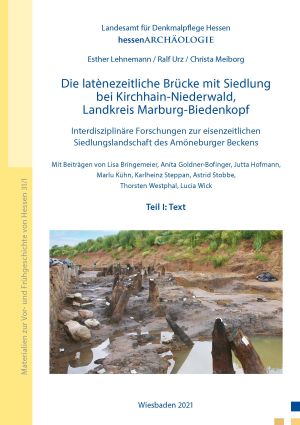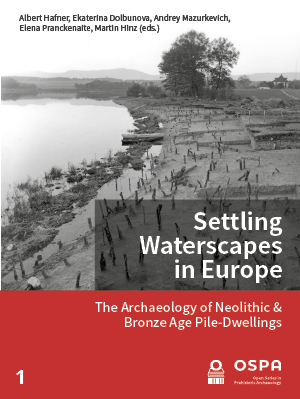Wick, Lucia
Die latènezeitliche Brücke mit Siedlung bei Kirchhain-Niederwald, Landkreis Marburg-Biedenkopf: Interdisziplinäre Forschungen zur eisenzeitlichen Siedlungslandschaft des Amöneburger Beckens
Between 2008 and 2012 hessenARCHÄOLOGIE uncovered a spectacular site of the later Iron Age in the northern Amöneburg Basin near Niederwald – the remains of a 21-metre-long wooden yoke-pile bridge that had served as a river crossing from around the middle of the 3rd to the middle of the 2nd century BC. It proved to be a stroke of luck that in 2011 400 m west of the bridge the remains of a contemporary settlement came to light, whose earliest traces date back to the Hallstatt period. The result of the in-depth interdisciplinary research, funded by the German Research Foundation (DFG), is a meticulous two-volume study that doesn’t just look at the local Iron Age remains, but draws a picture of the Amöneburg Basin during the 1st millennium BC in terms of landscape and settlement history.
Volume 2, s. hier.
Settling waterscapes in Europe: The archaeology of Neolithic and Bronze Age pile-dwellings
Pile dwellings have been explored all over Europe for decades now. This has led to the development of different methods and even schools of excavations and analysis techniques influenced by the research traditions in individual countries. This volume provides a current insight into international research on life in and around prehistoric waterscapes. It contains various case studies demonstrating the importance of scientific analysis for the study of settlement between land and water and on the anthropogenic influence on the landscapes around Neolithic and Bronze Age pile dwellings, presenting a new body of data and international perspectives on the settlement of European waterscapes.
Related research data are here.








